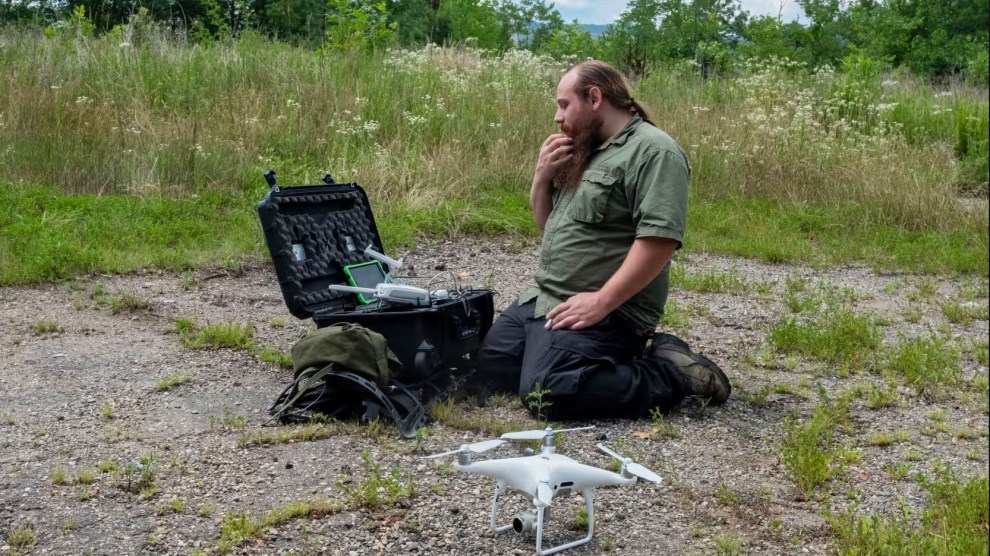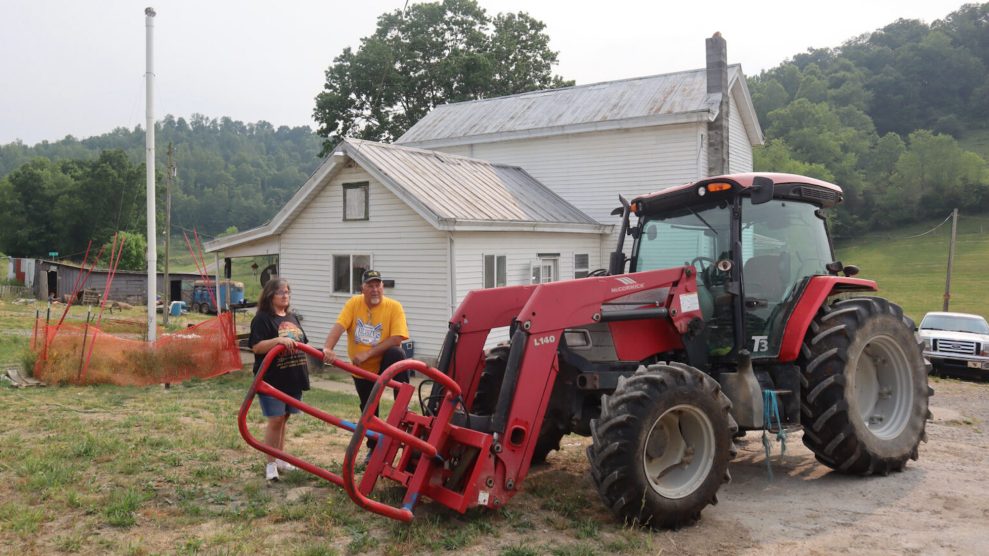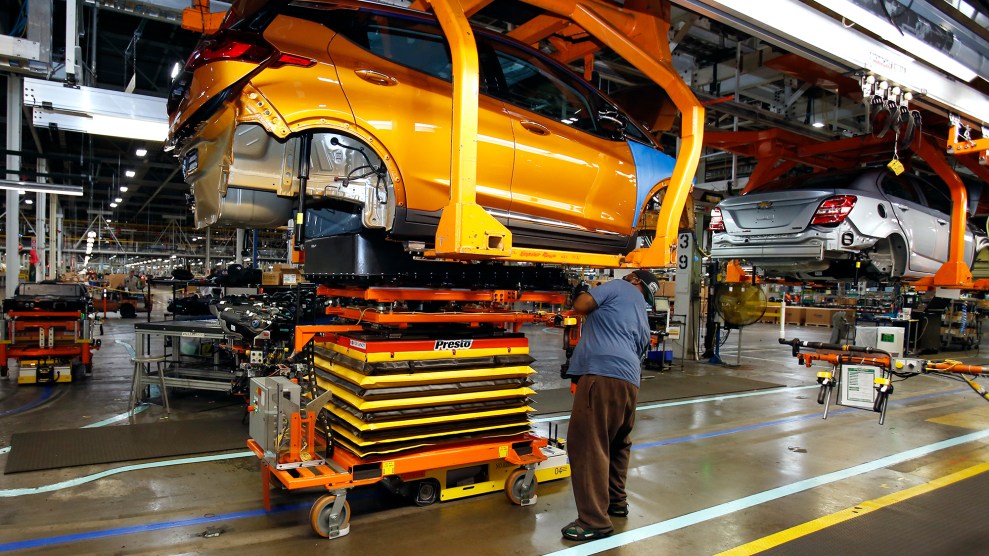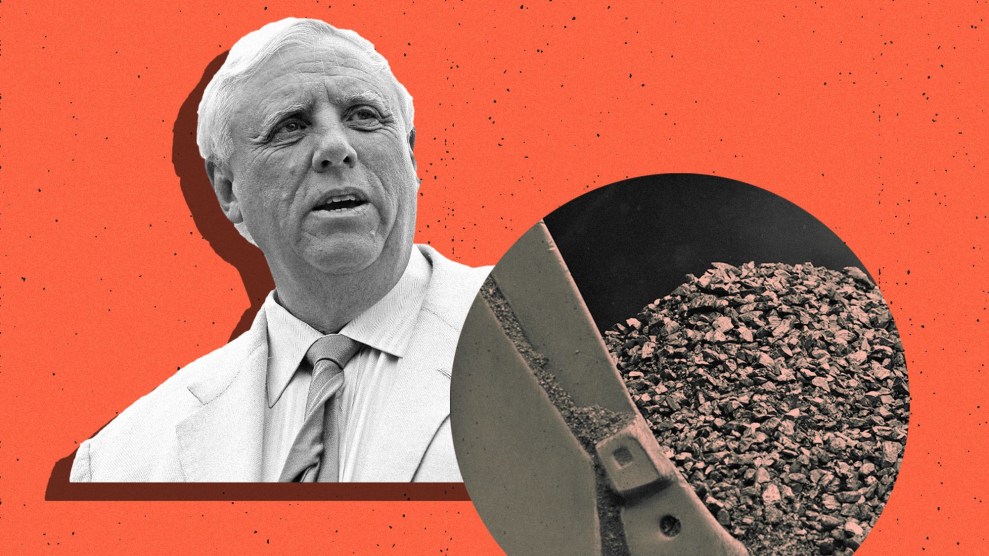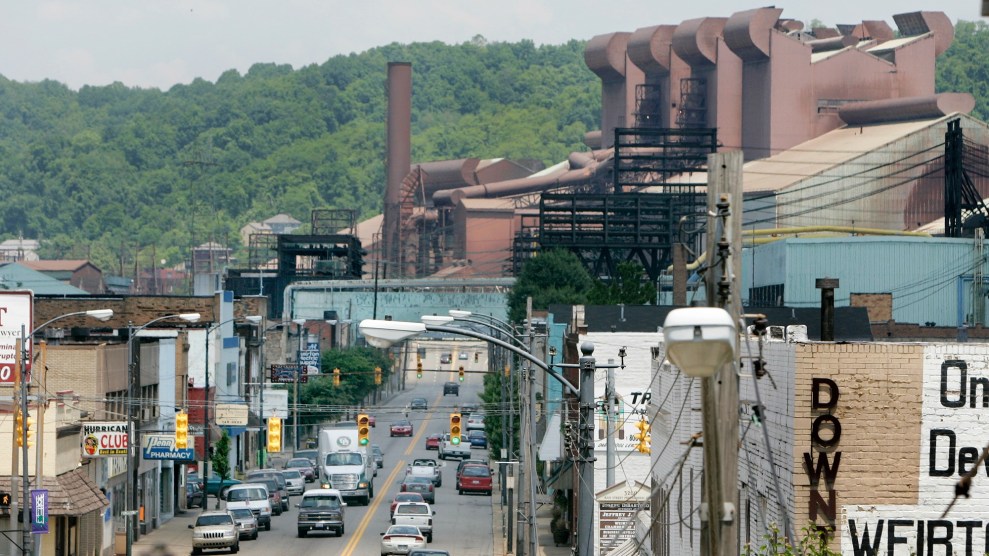
Weirton Steel looms over the heart of Weirton, W.Va., on June 8, 2006. It will be the location of a renewable energy battery plant.Amy Sancetta/AP
This story was originally published by Guardian and is reproduced here as part of the Climate Desk collaboration.
A cutting-edge energy storage company is building its main manufacturing plant where a once-thriving West Virginia steel mill once stood in the city of Weirton. According to lawmakers, the much-lauded project was made possible by incentives from 2022’s Inflation Reduction Act (IRA), signed by President Biden one year ago this Wednesday.
For supporters, it’s a sign that climate policies can also breathe life back into deindustrialized coal and steel communities with green jobs. The symbolism is compelling but how much those communities benefit will depend on a wide array of factors.
Form Energy, a Massachusetts-based company helmed by a former Tesla vice president, broke ground on its iron-air battery manufacturing plant this past May. Workers will produce batteries capable of storing electricity for 100 hours, which will run on iron, water, and air instead of the more common but less-abundant metal lithium. The $760 million project will create 750 well-paying permanent jobs, the company said.
The plant is being constructed on the ashes of the old Weirton steel mill, once the beating heart of the steel economy in the Ohio River valley. At its height in the 1940s, the mill was West Virginia’s number one taxpayer and its largest employer, boasting a 13,000-strong workforce.
“You could literally graduate one day from high school and be hired at the steel mill making very good money,” said Mark Glyptis, president of the United Steelworkers Local 2911 and a third-generation steelworker from Weirton.
But Weirton’s economy began to wither in the 1970s. Local industry slowly declined as the market began to prefer cheaper foreign steel—and, Glyptis said, stopped enforcing regulations on the material.
The company filed for bankruptcy protection in 2003. The fallout, said Glyptis, has been “heartbreaking”.
“It changed the landscape and the community has suffered significantly,” said Glyptis. “Our children, many of whom were planning on staying and living in the valley, have had to leave the valley to seek employment somewhere else.”
After the decline of domestic coal and steel, West Virginia transitioned from a production-based economy to a service-based one. This was a major blow to residents’ economic well-being, said Ted Boettner, a senior researcher with the Ohio River Valley Institute.
The Weirton steel mill paid an average of roughly $16 an hour in the 1970s, which was a “decent wage”, said Boettner. By contrast, in 2013, he found that Walmart, then the state’s biggest employer, paid half of its employees less than $15 an hour – a comparison that does not account for inflation, he said.
Glyptis is optimistic that the new battery plant will help revitalize the community where he grew up. “There’ll be significant opportunities for our children to prosper,” he said.
The IRA’s carbon-cutting incentives were touted as a way to reduce the nation’s carbon emissions by 40% from 2003 levels while bringing manufacturing jobs back onshore. Since the law’s passage last year, manufacturers have announced 83 new or expanded major clean energy manufacturing facilities, including 14 battery manufacturing facilities, according to the American Clean Power Association.
“They’ve made the US the place for the private sector to invest in clean energy,” Samantha Smith, senior adviser for clean energy jobs at the AFL-CIO, said of the IRA’s incentives.
Form Energy has agreed to provide employees decent wages and working conditions. That is not merely a sign of the company’s altruism. The IRA incentivizes green energy developers to pay workers a prevailing wage and to have a certain share of labor done by workers in registered apprenticeship programs.
By meeting those requirements, companies can get a 30% tax credit on qualifying projects. If they fail to meet the standards, that percentage drops to 6%. “Those conditions … are great,” said Smith.
The landmark policy also sets aside a share of manufacturing tax credits specifically for facilities based in former coal communities, said Ben Beachy, industrial policy expert at the labor-climate group BlueGreen Alliance. “This law rightly recognizes that an energy transition that is fair for workers and communities will not automatically happen,” he said. “It needs to be a deliberate policy choice.”
At the new battery plant’s well-attended groundbreaking ceremony in May, Form Energy also specifically committed to employing at least some unionized workers, said Glyptis.
But the IRA stops short of directly requiring companies to employ unionized labor. On the campaign trail, Biden indicated support for making union neutrality—wherein companies agree not to contest a union vote – a necessary condition for obtaining federal funding, but that requirement is not in the IRA.
Absent union representation, workers’ ability to protect their working conditions and advocate for better benefits and wages that exceed the federal prevailing wage would be severely muted, said Boettner of the Ohio River Valley Institute.
“I think in order for West Virginia to fully benefit from the clean energy economy, it has to be very focused on rebuilding the labor movement in the state and making it stronger,” he said.
Green industries are less unionized than fossil fuel sectors. Changing that won’t be easy, said Smith of the AFL-CIO. The US labor movement has faced decades of attacks. And the majority of investment from the IRA has so far gone to states that, like West Virginia, are controlled by Republicans and have passed anti-union “right to work” policies.
“We’ve got some state governments that are determined to drive unions out of their state,” she said. “They even market themselves to employers on that basis.”
But she said the AFL-CIO and its affiliate unions are “pouring a lot of resources” into organizing green sectors. She feels optimistic that they’re up to the challenge.
One thing that could help: the US Department of Energy has issued guidance saying IRA investments for businesses that have a unionized workforce should sign binding legal agreements with unions.
“It’s critical that those rules be enforced,” Beachy of the BlueGreen Alliance said.
The new battery plant alone likely cannot singlehandedly revive the Ohio River valley’s economy. While Weirton Steel employed thousands of workers, Form Energy’s plant will employ fewer than 1,000.
But Patrick Ford, a director at the Frontier Group, the firm that paid to remediate the former Weirton steel mill site and prepare it for new development with additional incentives from the IRA, said he expects the battery facility will spark further investment.
“You need a pioneer,” he said.
Seeing a developer break ground on a formerly contaminated site, he said, will encourage developers to come to the region, too. He noted that there are still more than 2,000 acres (810 hectares) of the old Weirton steel plant’s footprint available for new businesses. He estimated the site could support thousands of additional jobs and billions of dollars in further investment.
Boettner said the battery plant could lead to the creation of a cluster of battery plants in the Ohio River valley. However, the Biden administration has not required power grids to use batteries and absent such mandates, battery power will have to prove it can compete in the market, he said.
“That’s a question mark,” Boettner said.
Other battery developers have announced plans to locate plants in West Virginia, but there’s no guarantee they will all get built, said Boettner. Even if they do, the state won’t see the full benefits unless it taxes the new developments to pay for public services, he said.
Historically, West Virginia has not adequately taxed fossil fuel producers for extraction, Boettner said. “That’s the story of Appalachia: never fully benefiting from the rich natural resources that are there,” he said.
The state is at risk of repeating the same mistake, he said, noting that it has already poured more than $250m into the project and that Form Energy won’t have to pay any property taxes on it.
“I imagine at least for the first 10 years of this battery factory’s life, they’re not going to pay any state corporate income tax, very little state taxes at all,” he said.
Despite the many questions ahead, Glyptis of the United Steelworkers said he feels hopeful that the battery plant could help hard-hit Appalachian communities recover from years of disinvestment. He said the Weirton steel mill is an attractive site for developers, located close to highways, a river and an airport, and within a community of skilled tradespeople.
“I think we’ll see this community reinvent itself,” he said.
